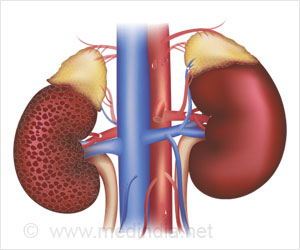A new study shows anemia may double the risk of an older person developing serious physical declines that can erode the ability to live independently.
A new study shows anemia may double the risk of an older person developing serious physical declines that can erode the ability to live independently. Researchers say seniors who do not have anemia, but whose blood tests are just above the traditional cut-off point for the condition's diagnosis, are 1.5-times more likely to develop physical declines than those who have normal blood hemoglobin levels.
Investigators followed 1,146 people, ages 71 and older, for more than four years. Researchers assessed participants' standing balance, a timed eight-foot walk, and the ability to rise from a chair. Each activity was scored on a scale (a zero equaled inability to do a test; a four equaled a top performance). Points were then added together for a cumulative score.Results of the study show two-thirds of participants had at least modest declines in physical performance scores. Those who did not have anemia averaged a 1.4-point decline on the overall 12-point scale. Those who had borderline anemia dipped an average of 1.8 points and those with anemia dropped an average of 2.3 points.
Anemia is a blood condition that affects at least 3.4 million Americans and about 13 percent of older Americans. It is the most common blood disorder in the United States. The condition occurs when the body doesn't produce enough red blood cells or red blood cells are prematurely destroyed.











